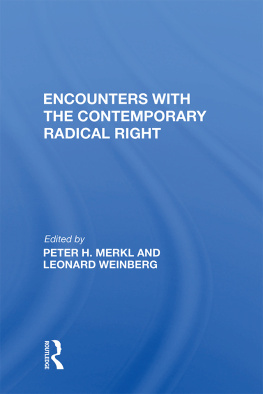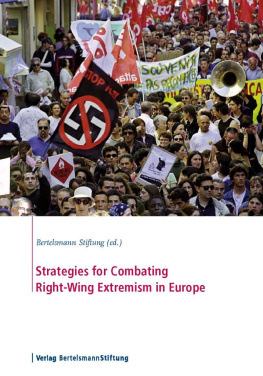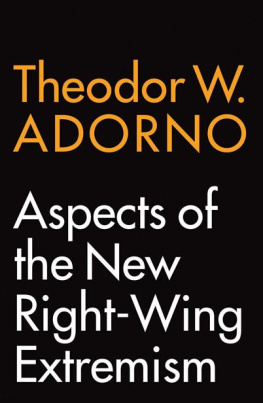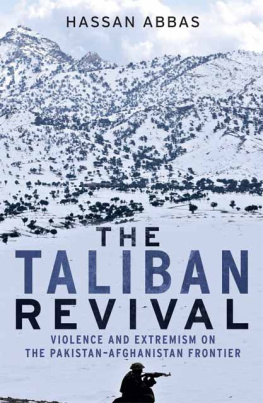The Revival of Right-Wing Extremism in the Nineties
Cass Series on Political Violence
series Editors:
DAVID C. RAPOPORT, University of California, Los Angeles
PAUL WILKINSON, University of St Andrews, Scotland
- Terror from the Extreme Right , edited by Tore Bjrgo
- Millennialism and Violence, edited by Michael Barkun
- The Revival of Right-Wing Extremism in the Nineties edited by Peter H. Merkl and Leonard Weinberg
- Religious Radicalism in the Greater Middle East edited by Bruce Maddy-Weitzman and Efraim Inbar
Forthcoming...
Violence in Southern Africa , edited by J. E. Spence
April 19 and Right-Wing Violence , edited by David C. Rapoport
The Revival of Right-Wing Extremism in the Nineties
Edited by
Peter H. Merkl
Professor Emeritus of Political Science, University of California, Santa Barbara
and
Leonard Weinberg
Professor of Political Science, University of Nevada, Reno
First published in 1997 by
FRANK CASS & CO. LTD.
This edition published 2013
by Routledge
2 Park Square, Milton Park, Abingdon, Oxon, OX14 4RN
711 Third Avenue, New York, NY 10017
Routledge is an imprint of the Taylor & Francis Group, an informa business
Copyright 1997 Contributors
British Library Cataloguing in Publication Data
A catalogue record for this book is available from the British Library
ISBN 0 7146 4676 8 (hardback)
ISBN 0 7146 4207 X (paper)
Library of Congress Cataloging-in-Publication Data
A catalog record for this book is available from the Library of Congress
All rights reserved. No part of this publication may be reproduced in any form or by any means, electronic, mechanical, photocopying, recording or otherwise, without the prior permission of the publisher.
Contents
| David Rapoport |
| Peter H. Merkl |
| Peter H. Merkl |
| Piero Ignazi |
| Michael Minkenberg |
| Lauri Karvonen |
| Thomas S. Szayna |
| Henry F. Carey |
| Vera Tolz |
| Taras Kuzio |
| Leonard Weinberg |
| Adrian Guelke |
| Leonard Weinberg |
Peter Merkl and Leonard Weinbergs The Revival of Right Wing Extremism in the Nineties is a thoughtful, scholarly and welcome addition to the Frank Cass Series on Political Violence. Its predecessors, Tore Bjorgos Terror from the Extreme Right (1995) and Michael Barkuns Millennialism and Violence (1996), were originally special issues of The Journal of Terrorism and Political Violence (TPV). But this volume was planned independently of the editors of TPV.
Each volume so far focuses on violence generated by the right, and that is surprising because, when the series was first discussed, no one thought the original emphasis would be so pronounced. The collapse of Marxism simply made right-wing activities much more obvious and significant.
New themes treated in this volume are related to the activities of the right in Eastern Europe, often led by former Communists. The troubling question of how the circumstances of contemporary Russia compare with those of the Weimar Republic is examined too. When countries are revisited, the emphasis is on right-wing fortunes in the electoral arena and/or on recent remarkable developments like the fall of the Apartheid regime in South Africa and the efforts to conclude a peace in Northern Ireland.
David Rapoport and Paul Wilkinson
Peter H. Merkl
This symposium is a follow-up to our earlier Encounters with the Contemporary Radical Right (1993) which described the new radical right movements and activities in Europe, Israel, and America, country by country, and according to a common list of important aspects. Each of the contributors was to discuss the ideology, antecedents, political history, and popular support of the relevant movements in his or her country, and the editors rounded out these accounts with particular attention to the question of definitions, continuity with earlier (especially inter-war) movements, and the relation of radical right parties to social movements and individual crazies of the same persuasion. The book covered Britain, Germany, France, Italy, Israel, post-communist Russia, Romania, and the United States, By the time it appeared, the rapidly evolving radical right scene was undergoing dramatic changes which seemed to call for revisions before the printers ink had dried. Across Western Europe, rising waves of migrants and political asylum-seekers had encountered violent reactions, especially in post-unification Germany. The radical right vote in numbers of countries began to rise to alarming levels, for instance in Austria where Jrg Haiders Freedom Party (FPO) eventually polled 22.6 per cent, in Italy where the neo-fascist Italian Social Movement (MSI) metamorphosed into the National Alliance (AN) after receiving 13.4 per cent of the popular vote and entering the coalition government of Silvio Berlusconi, The Belgian radical right vote has also been rising, especially in the city of Antwerp.
A New Wave of Right-wing Extremism
The anti-foreign violence of the years 199193 in Germany, in particular, had loosed an avalanche of media alarms at home and abroad which tended to see in it a revival of national socialism from Warsaw to Los Angeles, newspapers thought they saw the Nazi stormtroopers on the march again Many a politician of the moderate right was seen to jump on the bandwagon and try to use these sentiments to political advantage. De Villiers, for example, and many of his original supporters were from Giscard dEstaings Union for a Democratic France (UDF) or the Gaullist party (RPR), while Californias Governor Pete Wilson used to be considered a liberal Republican before he discovered these new issues.
The rapidly evolving politics of post-communist Eastern Europe matched the thunder on the right in the West in dramatic ways. With the collapse of communist belief systems, for example, there had been social and cultural movements of nativist beliefs such as Pamyat in Russia and the Romanian Vatra Romneasca,
A New Approach
The lessons drawn by the editors of Encounters from the explosive developments on the extreme right in the years 199294 were clear. The sudden and dramatic upsurge of the radical right vote in some but not in other countries, the shocking waves of xenophobic violence that were at first attributed only to Germany, and the differences among right extremist movements clearly called for a comparative approach, for which our country-by-country method of Encounters had already set out a basis. A number of novel features or features that now struck us as new also suggested lines along which such comparisons should be pursued. What was the difference between the old inter-war radical right and the contemporary phenomenon? Were there new social settings, new international compulsions, new conflicts in these societies for example over the ubiquitous presence of foreign residents or the flow of immigration that could explain why radical right movements had become so strong in the eighties and nineties? With the enormous changes in the family, in gender relations, and the role of the individual, was the right-winger of today motivated by different psychological forces from those, that Wilhelm Reich, for example, had tried to analyze as a product of his family and relationships?












